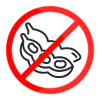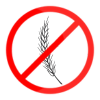











purebulkinc
Quercetin Pure
Customers Who Bought This Item Also Bought
Supplement Facts & Directions
Supplement Facts
Serving Size: 600 milligramsServings Per Container: Varies
| Amount Per Serving | % Daily Value* |
|---|---|
| Quercetin (Sophora japonica) (buds) 527 mg | † |
* Percent Daily Values are based on a 2,000 calorie diet.
† Daily Value Not Established
‡
These supplement facts may vary from the product you receive. Please call for exact numbers.
Other Ingredients: None
Free of: Added Sugar, Soy, Dairy, Yeast, Gluten, Corn & Additives.
Directions: As a dietary supplement, take 600 mg (3/8 tsp) once daily or as directed by a physician.
Warning: If you are pregnant, nursing, taking any medications or have any medical condition consult your physician before use. Keep out of reach of children.
Product Details
What is Quercetin?
Quercetin is a bioflavonoid and a natural pigment found in numerous foods. Onions and grapes are the best food sources of quercetin (1). Quercetin’s unique properties allow it to interact synergistically with other bioflavonoids, and it may improve the absorption of other supplements as well.
Quercetin is an effective antioxidant, and it scavenges free radicals. Free radicals can damage cells and cause oxidative stress. Antioxidants prevent free radicals from accumulating and causing health problems (2). Quercetin also has anti-inflammatory properties and helps support the immune system (3, 4).
Quercetin and Zinc
Quercetin and zinc working together may help strengthen immune function (8, 9). Quercetin may act as a zinc-ionophore, which increases concentrations of zinc. Ionophores bind to ions and transport those ions across cell membranes. Ionophores often have antibacterial properties (10). Zinc plays a significant role in the immune system (11). Zinc deficiency reduces antibody production, which makes the body more susceptible to infections (12, 13). However, it’s difficult for zinc to distribute throughout cells (14). Quercetin acts as a zinc transport mechanism to increase cellular zinc concentrations (8, 9).
Zinc plays a significant role in the immune system (11). Zinc deficiency reduces antibody production, which makes the body more susceptible to infections (12, 13). However, it’s difficult for zinc to distribute throughout cells (14). Quercetin acts as a zinc transport mechanism to increase cellular zinc concentrations (8, 9).
Quercetin and Vitamin C
Like quercetin, vitamin C is a potent antioxidant that supports the immune system (15). Vitamin C also improves iron absorption, which is critical for vegetarians and vegans as meat is a significant iron source (16). Vitamin C’s antioxidant properties help strengthen the skin, which may improve the body’s defenses against infection (17). Quercetin and vitamin C synergize to enhance their antiviral potential (15). Vitamin C recycles quercetin to increase its efficacy (15).
Did You Know?
Quercetin works synergistically with saponins and may enhance their anti-inflammatory properties (5). Saponins are a naturally occurring compound found in tea plants and tea extracts (6).
Quercetin also synergizes with green tea catechins. Green tea has four primary catechins, but the most potent is EGCG. Taken together, quercetin and green tea extract may improve exercise performance (7).
Quercetin and Resveratrol
Quercetin and resveratrol are both polyphenols with anti-inflammatory properties (18). Resveratrol comes from a variety of plant sources including grapes, raspberries, plums, and grape tomatoes (19). Wine is another rich source of resveratrol and contains high amounts of quercetin as well (20). Combining these two antioxidants enhances their anti-inflammatory potential (21).
What Are the Side Effects of Quercetin?
Quercetin is present in many foods and the FDA granted it GRAS (generally recognized as safe) status (22). Typical doses do not cause side effects, but studies using larger doses up to 1g may cause a tingling sensation, mild headache, or mild stomach aches (23). However, it’s important to note that quercetin may interact with some medications. Always consult your doctor before starting any new supplement.
References
- https://www.ncbi.nlm.nih.gov/pmc/articles/PMC5214562/
- https://pubmed.ncbi.nlm.nih.gov/24587990/
- https://pubmed.ncbi.nlm.nih.gov/26687116/
- https://pubmed.ncbi.nlm.nih.gov/20887269/
- https://pubmed.ncbi.nlm.nih.gov/19807157/
- https://pubmed.ncbi.nlm.nih.gov/32746657/
- http://media.frsplus.com/components/MacRae_Mefferd_FRS%3Cem%3EFinal%3C/em%3EIJSNEM_06.pdf
- https://pubs.acs.org/doi/10.1021/jf5014633
- https://pubmed.ncbi.nlm.nih.gov/26617034/
- https://www.ncbi.nlm.nih.gov/pmc/articles/PMC4896753/
- https://pubmed.ncbi.nlm.nih.gov/9701160/
- https://www.ncbi.nlm.nih.gov/pubmed/9701154
- https://www.ncbi.nlm.nih.gov/pmc/articles/PMC5490603/
- https://www.sciencedirect.com/science/article/pii/S0167488906000590
- https://pubmed.ncbi.nlm.nih.gov/29099763/
- https://www.ncbi.nlm.nih.gov/pubmed/20200263
- https://www.sciencedirect.com/science/article/pii/S0891584998001324
- https://www.ncbi.nlm.nih.gov/pmc/articles/PMC5740593/
- https://pubmed.ncbi.nlm.nih.gov/21570690/
- https://pubmed.ncbi.nlm.nih.gov/9292395/
- https://www.ncbi.nlm.nih.gov/pmc/articles/PMC5740593/
- https://www.ncbi.nlm.nih.gov/books/NBK299055/
- https://www.ncbi.nlm.nih.gov/pubmed/29127724
Tested by Accredited 3rd Party Labs
PureBulk's supplements are tested by accredited third party labs in the USA to ensure their identity, purity and potency. To receive a copy of these test results or any other PureBulk supplement please fill out the COA request form found here.
*NOTE: These statements have not been evaluated by the Food and Drug Administration. This product is not intended to diagnose, treat, cure or prevent any disease.
Tested by Accredited 3rd Party Labs
PureBulk's supplements are tested by accredited third party labs in the USA to ensure their identity, purity and potency. To receive a copy of these test results or any other PureBulk supplement please fill out the COA request form.


















